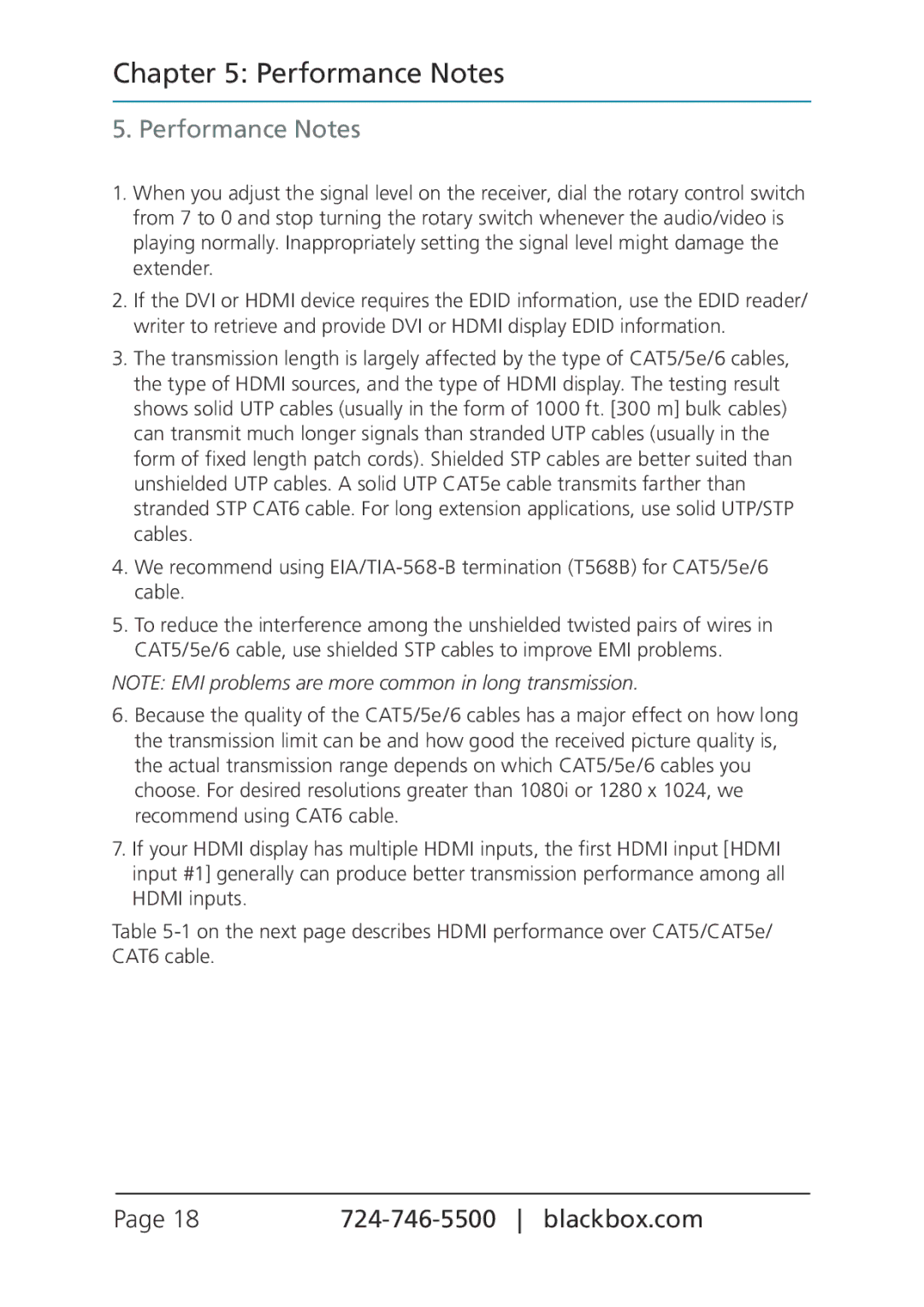
Chapter 5: Performance Notes
5. Performance Notes
1.When you adjust the signal level on the receiver, dial the rotary control switch from 7 to 0 and stop turning the rotary switch whenever the audio/video is playing normally. Inappropriately setting the signal level might damage the extender.
2.If the DVI or HDMI device requires the EDID information, use the EDID reader/ writer to retrieve and provide DVI or HDMI display EDID information.
3.The transmission length is largely affected by the type of CAT5/5e/6 cables, the type of HDMI sources, and the type of HDMI display. The testing result shows solid UTP cables (usually in the form of 1000 ft. [300 m] bulk cables) can transmit much longer signals than stranded UTP cables (usually in the form of fixed length patch cords). Shielded STP cables are better suited than unshielded UTP cables. A solid UTP CAT5e cable transmits farther than stranded STP CAT6 cable. For long extension applications, use solid UTP/STP cables.
4.We recommend using
5.To reduce the interference among the unshielded twisted pairs of wires in CAT5/5e/6 cable, use shielded STP cables to improve EMI problems.
NOTE: EMI problems are more common in long transmission.
6.Because the quality of the CAT5/5e/6 cables has a major effect on how long the transmission limit can be and how good the received picture quality is, the actual transmission range depends on which CAT5/5e/6 cables you choose. For desired resolutions greater than 1080i or 1280 x 1024, we recommend using CAT6 cable.
7.If your HDMI display has multiple HDMI inputs, the first HDMI input [HDMI input #1] generally can produce better transmission performance among all HDMI inputs.
Table
Page 18 |
